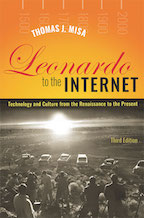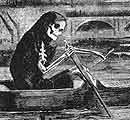| READING
QUESTIONS Leonardo to the Internet: Technology and Culture from the Renaissance to the Present Thomas J. Misa Johns Hopkins University Press, 2022; 3rd edition |
 |
WWW sites
- Economic History Society "The Industrial Economy:
Britain, 1750-1830"
- Mount Holyoke College "Images
of the Industrial Era"
- At BBC.co.uk -- see Paul Atterbury "Victorian Technology"; Pat Hudson "Workshop of the World"; Bruce Robinson "All Change in the Victorian Age"
Chapter 3. Geographies of Industry (1740-1851)
DISCUSS London as a site of
industry -- as well as London's impact on
Britain's trading, transport, and agriculture.
EXPLAIN why porter
beer "deserves full
recognition as an industrial-age product" and paradigm
case for industrialization.
DISCUSS London's building and
engineering industries. What was their
contribution to industrialization?
 What caused the environmental disaster
known as London's "Great
Stink" [1858]? How
bad was it?
What caused the environmental disaster
known as London's "Great
Stink" [1858]? How
bad was it?
Identify the key mechanical inventions
that transformed the carding, spinning, and weaving of
cotton into cloth (many before 1790). Why did a
"revolution" in Manchester's cotton factories take
another 40 years (to 1830s)?
COMPARE London's and Manchester's
engineering/machine tool industry. DISCUSS the
London-Manchester migrants.
Discuss the cultural changes evident in Manchester during 1800-50:
- women's work and life
- labor protests
- literary responses [Dickens et
al.]
- F. Engels' Condition of the
Working Class [pdf]
DESCRIBE the impact of steam power on
living and working in Sheffield. Summarize the
life-and-death statistics.
WHY were there "many paths" to the
industrial revolution? What common features, if
any, existed in London, Manchester and Sheffield?
On balance, did Sweden, the U.S., or France have a British-style industrial revolution?